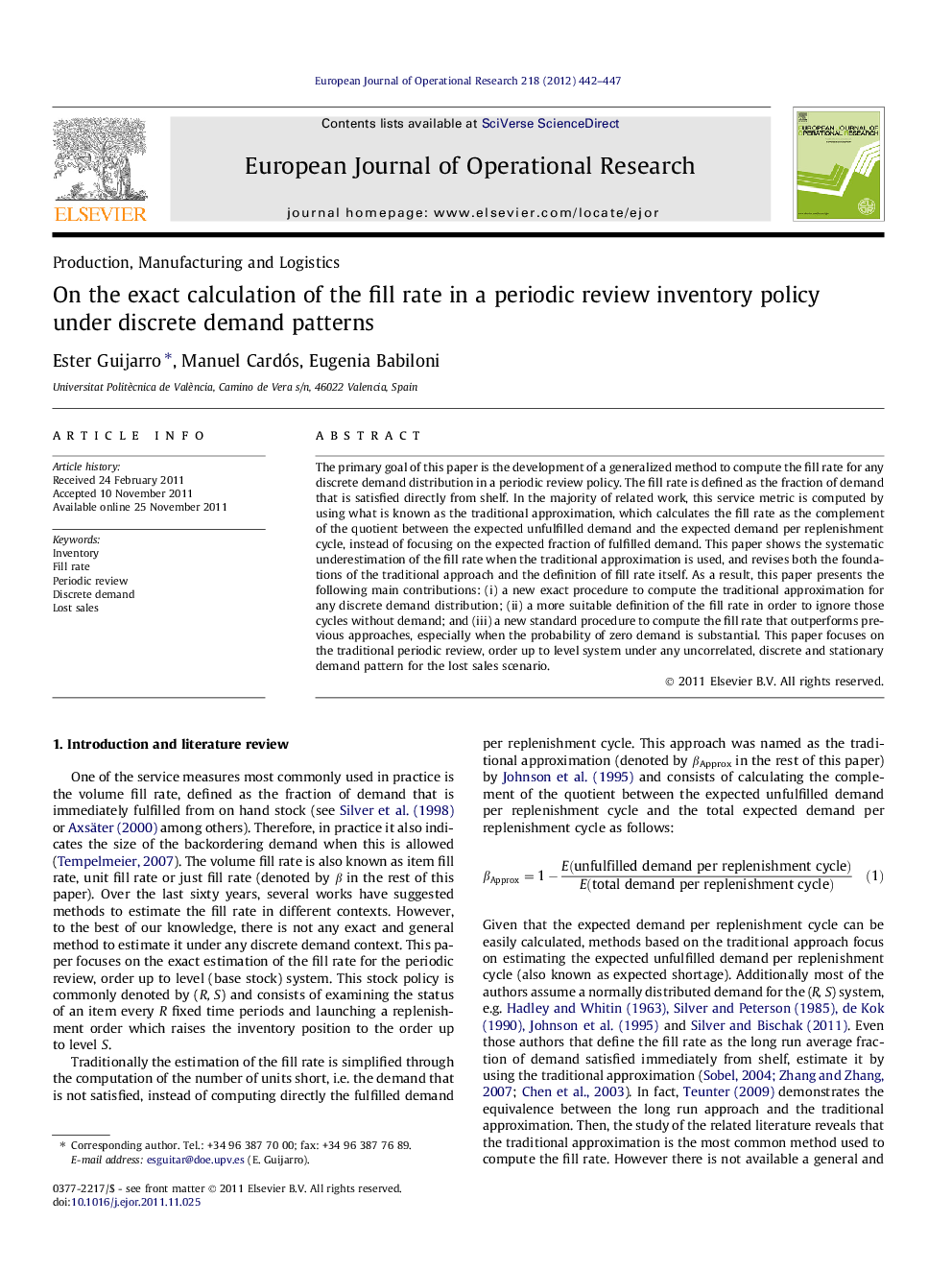| Article ID | Journal | Published Year | Pages | File Type |
|---|---|---|---|---|
| 476869 | European Journal of Operational Research | 2012 | 6 Pages |
The primary goal of this paper is the development of a generalized method to compute the fill rate for any discrete demand distribution in a periodic review policy. The fill rate is defined as the fraction of demand that is satisfied directly from shelf. In the majority of related work, this service metric is computed by using what is known as the traditional approximation, which calculates the fill rate as the complement of the quotient between the expected unfulfilled demand and the expected demand per replenishment cycle, instead of focusing on the expected fraction of fulfilled demand. This paper shows the systematic underestimation of the fill rate when the traditional approximation is used, and revises both the foundations of the traditional approach and the definition of fill rate itself. As a result, this paper presents the following main contributions: (i) a new exact procedure to compute the traditional approximation for any discrete demand distribution; (ii) a more suitable definition of the fill rate in order to ignore those cycles without demand; and (iii) a new standard procedure to compute the fill rate that outperforms previous approaches, especially when the probability of zero demand is substantial. This paper focuses on the traditional periodic review, order up to level system under any uncorrelated, discrete and stationary demand pattern for the lost sales scenario.
► We analyze the foundations of the traditional approximation of the fill rate. ► The traditional approximation tends to underestimate the fill rate. ► We propose a revised definition of the fill rate to ignore cycles without demand. ► We derive a generalized fill rate method for any discrete demand pattern.
